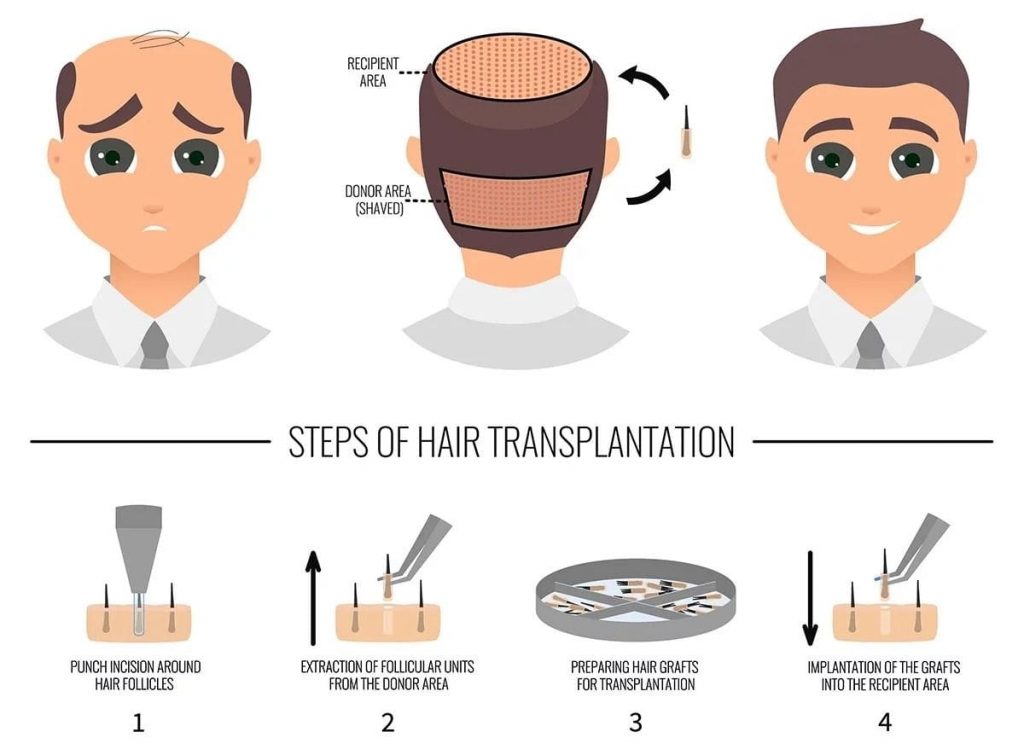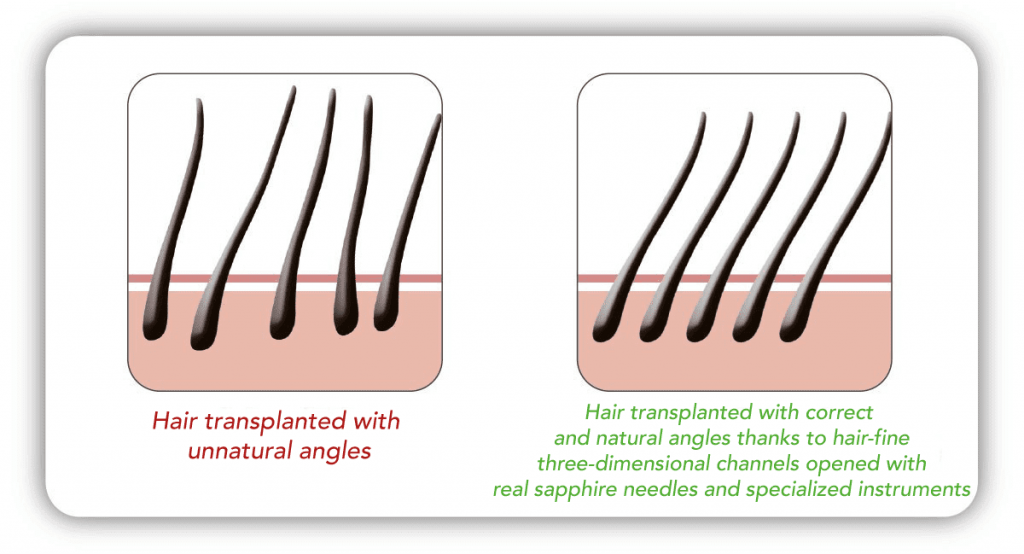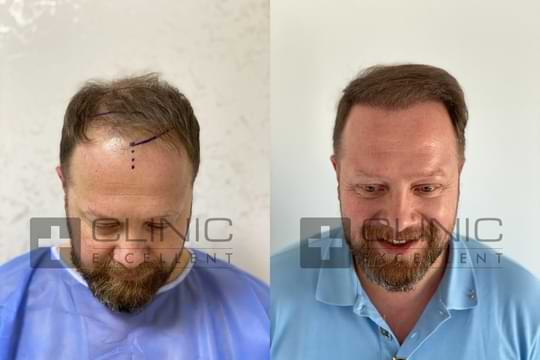Sapphire Hair Transplant Turkey

Despite its widespread popularity, the traditional FUE procedure is continually evolving to incorporate new creative concepts and technology. With the introduction of sapphire FUE in recent years, it has progressed even further. This isn’t a brand-new approach; rather, it’s a refinement of the current FUE procedure.
What is Sapphire Fue Hair Transplant?
A sapphire hair transplant is performed similarly to a traditional FUE transplant. The blade that is utilized during the channel construction step is the difference between the two. While the traditional FUE method utilizes steel blades, the sapphire FUE technique, as the name implies, uses sapphire blades. Sapphire blades, which are made from a valuable gemstone, are recognized for their sharpness, smoothness, and longevity. These characteristics enable the surgeon to make micro-channels, which are basically smaller, more precise incisions in the recipient area.

This is critical because the most crucial part of hair transplantation surgery is to create channels in order to prepare the area for the transplantation. As previously stated, the density, angle, and direction of new hair growth after the operation is determined by the structure of these formed channels. A sapphire blade’s capacity to generate narrower, more accurate channels can provide more natural-looking results than a traditional steel blade.

Advantages of a Sapphire FUE Hair Transplant Istanbul
In 2016, sapphire blades were introduced to the FUE hair transplant procedure, which helped to revolutionize the treatment’s potential. There are a number of important advantages of sapphire FUE, which we’ve described in further detail here.
After administering a local anesthetic to the patient, hair follicles are removed one by one from the donor region using a micro motor and micro punches with diameters of 0,6 – 0,7 – 0,8 mm in FUE with sapphire blades.
The harvested hair follicles are transplanted into the incisions produced with the FUE technique. These channels have a significant impact on hair density, angle, and direction, all of which are important factors in achieving a realistic appearance. As a result, activating the channels is regarded as the most critical step in a successful operation.
The sapphire blades have now been shown to be the most effective method for opening tiny channels. Sharp, smooth, and durable sapphire blades ranging in size from 1,0 -1,3 – 1,5 mm are used to make the little incisions, which are the same length as hair follicles. More channels can be opened as a consequence, allowing hair follicles to be transplanted closer together.
There is a lower risk of post-operative complications
Although the risk of postoperative problems is low with a conventional FUE hair transplant, the sapphire FUE technique significantly reduces this risk. Traditional steel blades used in traditional FUE procedures grow dull and ineffective over time, causing tissue injury during the channel formation step. Sapphire blades, on the other hand, are sharper from the start and maintain their sharpness for longer. This helps to prevent scab development while also reducing the danger of tissue injury during the construction of the channels. The antimicrobial and antibacterial characteristics of sapphire blades assist to minimize the risk of infection during surgery.
Natural-Looking Results
FUE is known for its ability to generate natural-looking outcomes. Sapphire FUE, on the other hand, has gone one step farther. The surgeon can build more exact and precise microchannels because of the flexibility of a sapphire blade. The transplanted follicular units can then be put at natural angles and orientations, giving the overall appearance of a more seamless look. The new hair will continue to grow in the angles and directions specified by the micro-channels after surgery, resulting in a very natural-looking outcome.
Increased Density
The discovery of sapphire FUE has made the therapy available to a lot of people who would have previously been disqualified. The sapphire blade’s narrower form — and sharper point — allows surgeons to create more micro-channels in the recipient region. In essence, this permits transplanted follicular units to be put closer together, resulting in increased density when hair growth occurs. This has greatly enhanced the likelihood of successful hair transplantation for people with extensive hair loss.
Retaining Hair Follicles
Because sapphire blades are smaller and more accurate than steel blades, surgeons may make compact incisions that are the exact length of the hair follicles to be transplanted. Following the procedure, the transplanted follicles are less likely to move about, change angle, or become dislodged as a result of this.
Suitable for Metal Sensitivities
While this may only apply to a limited percentage of hair transplant candidates, sapphire FUE has this advantage. Sapphire blades can be used on those who are allergic to nickel, steel, or any other type of metal. Hair transplantation surgery has therefore become a realistic alternative for a lot of people who would otherwise be unable to undertake the procedure.
FUE Hair Transplant Before and After
Here is a few examples of Sapphire FUE Hair Transplant procedure, please click our before and after gallery to see more results.






